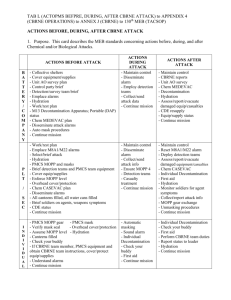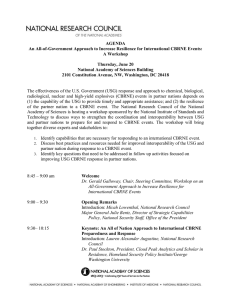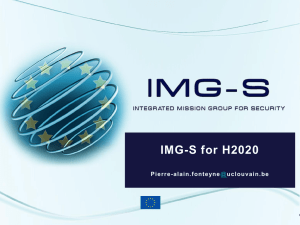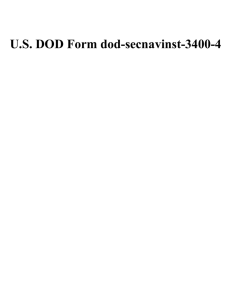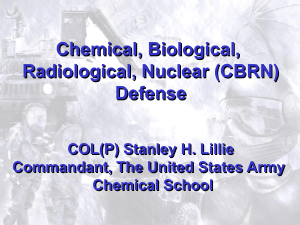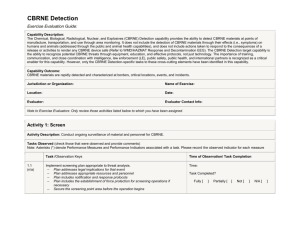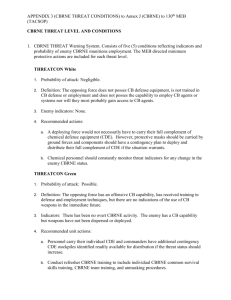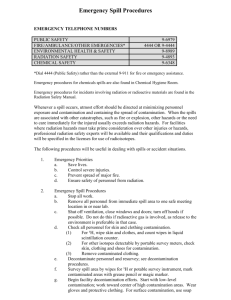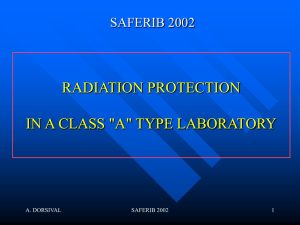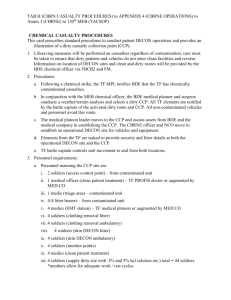Tab J (Contamination Avoidance) to App 4
advertisement
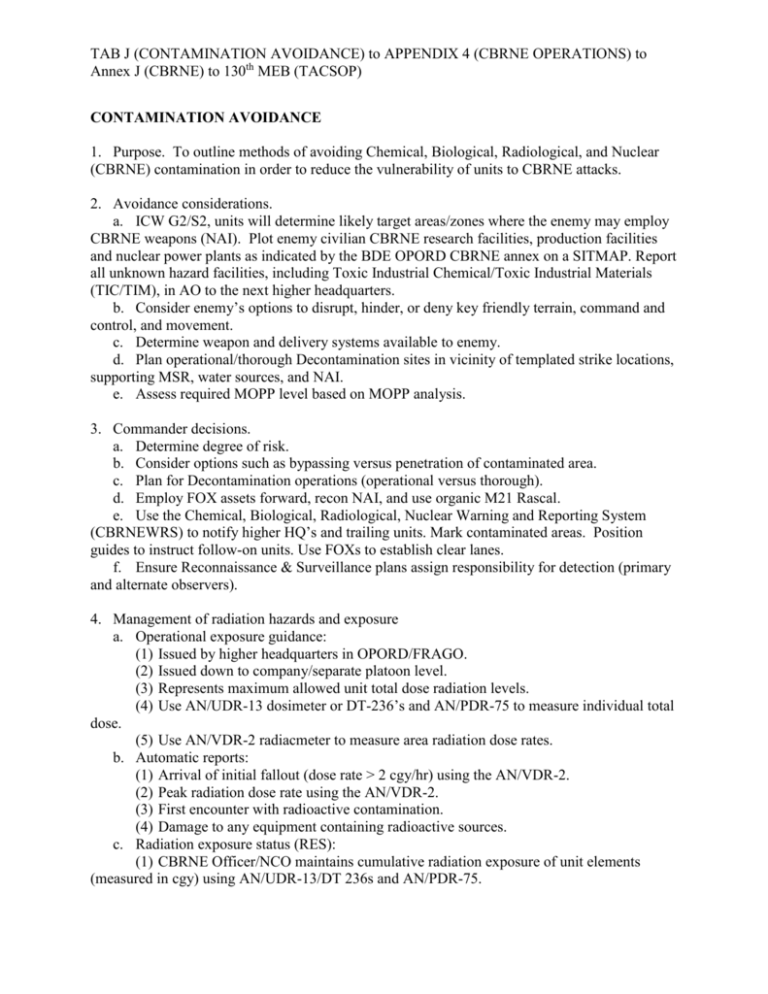
TAB J (CONTAMINATION AVOIDANCE) to APPENDIX 4 (CBRNE OPERATIONS) to Annex J (CBRNE) to 130th MEB (TACSOP) CONTAMINATION AVOIDANCE 1. Purpose. To outline methods of avoiding Chemical, Biological, Radiological, and Nuclear (CBRNE) contamination in order to reduce the vulnerability of units to CBRNE attacks. 2. Avoidance considerations. a. ICW G2/S2, units will determine likely target areas/zones where the enemy may employ CBRNE weapons (NAI). Plot enemy civilian CBRNE research facilities, production facilities and nuclear power plants as indicated by the BDE OPORD CBRNE annex on a SITMAP. Report all unknown hazard facilities, including Toxic Industrial Chemical/Toxic Industrial Materials (TIC/TIM), in AO to the next higher headquarters. b. Consider enemy’s options to disrupt, hinder, or deny key friendly terrain, command and control, and movement. c. Determine weapon and delivery systems available to enemy. d. Plan operational/thorough Decontamination sites in vicinity of templated strike locations, supporting MSR, water sources, and NAI. e. Assess required MOPP level based on MOPP analysis. 3. Commander decisions. a. Determine degree of risk. b. Consider options such as bypassing versus penetration of contaminated area. c. Plan for Decontamination operations (operational versus thorough). d. Employ FOX assets forward, recon NAI, and use organic M21 Rascal. e. Use the Chemical, Biological, Radiological, Nuclear Warning and Reporting System (CBRNEWRS) to notify higher HQ’s and trailing units. Mark contaminated areas. Position guides to instruct follow-on units. Use FOXs to establish clear lanes. f. Ensure Reconnaissance & Surveillance plans assign responsibility for detection (primary and alternate observers). 4. Management of radiation hazards and exposure a. Operational exposure guidance: (1) Issued by higher headquarters in OPORD/FRAGO. (2) Issued down to company/separate platoon level. (3) Represents maximum allowed unit total dose radiation levels. (4) Use AN/UDR-13 dosimeter or DT-236’s and AN/PDR-75 to measure individual total dose. (5) Use AN/VDR-2 radiacmeter to measure area radiation dose rates. b. Automatic reports: (1) Arrival of initial fallout (dose rate > 2 cgy/hr) using the AN/VDR-2. (2) Peak radiation dose rate using the AN/VDR-2. (3) First encounter with radioactive contamination. (4) Damage to any equipment containing radioactive sources. c. Radiation exposure status (RES): (1) CBRNE Officer/NCO maintains cumulative radiation exposure of unit elements (measured in cgy) using AN/UDR-13/DT 236s and AN/PDR-75. TAB J (CONTAMINATION AVOIDANCE) to APPENDIX 4 (CBRNE OPERATIONS) to Annex J (CBRNE) to 130th MEB (TACSOP) (2) All elements report to TOC any change in RES level. (3) RES levels: RES level RES – 0 RES – 1 RES – 2 RES – 3 Cumulative radiation level O cgy, no exposure 1 – 70 cgy 71 – 150 cgy > 150 cgy d. Individual exposure status is reported to the BDE Surgeon to be added to the Soldier’s medical records. e. Potential radioactive contaminated areas: (1) Commander decision to enter or cross area. The MEB Commander or first General Officer in the chain of command can decide to accept a risk higher than the directed Operational Exposure Guidance (OEG). (2) Mark area using standard marking kits (M274s). (3) Damaged equipment containing radioactive sources will be contained at the hazard location until safety personnel identify the source, gather, and seal for transport. Area will be marked off. Only safety personnel are to touch the radioactive source in order to process. (4) Prior to live fire, crews of tanks and Bradleys, which may contain depleted uranium armor and rounds, will be thoroughly briefed by the unit or higher command safety Officer/NCO as to the safety, evacuation procedures, and represented hazards of depleted uranium. f. Designated observer program: (1) BDE HQ’s determining designated observer. (2) Designate observers at CO/PLT levels to report flash-to-bang time for nuclear strikes. (3) Rehearse report procedures (Card 970.1 CBRNE-1 Observers Initial Report).
